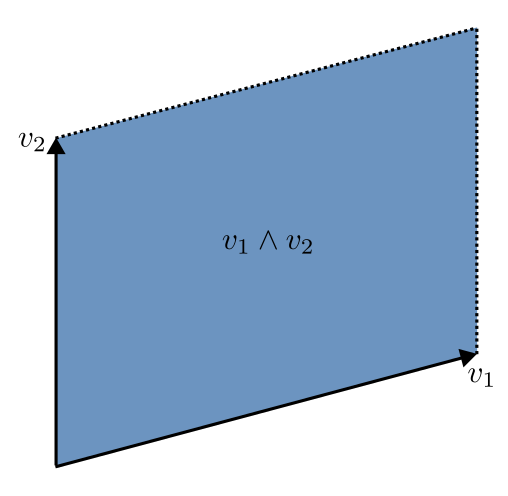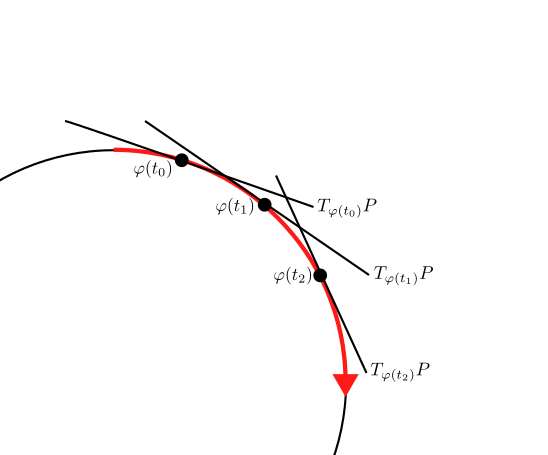The Wedge Product and Multivectors
Let be a vector space. The wedge product is a multilinear alternating operation, i.e.,
The wedge product was introduced to study the volume of surfaces. For example, let and be vectors in . Then the wedge product is
Notice that is the signed area of the parallelogram formed by and :
The signed area has the same magnitude as the area, but is positive or negative depending on the orientation of the surface.
Given three vectors . The scalar coefficient of gives the triple product, i.e., the signed volume of the parallelepiped formed by the vectors.
Multivector
Given vectors the -vector is given by The vector space of all -vectors is denoted .
More generally, if form a basis for , then
where the sum is taken over all combinations of indices from . If , then
One may view an -vector as the -dimensional parallelogram formed by the vectors with -dimensional volume given by the magnitude.

Differential Forms
Let denote the space of covectors dual to , i.e., the set of linear functionals . We often denote the dual orthonormal basis by , which is given by the linear functional defined by
0-form
A differentiable 0-form is a differentiable function .
1-form
A differential one-form on is a covector field, i.e., a map which assigns a covector to each vector.
One may view a one-form as the linear combination
Note that here can be viewed as a family of linear functionals. That is, given a vector ,
at the point .
For example, the change in angle form in is the one-form
Integrating over the unit circle gives
Note that is simply the gradient viewed as a 1-form.
Visualizing 1-forms
Let be the 2-sphere in . At any point the sphere has a tangent plane which we denote by . This tangent space forms a vector space. The collection of all tangent spaces,
is called the tangent bundle. Taking the dual gives the cotangent bundle, , where now we are assigning each point a linear functional . Under this view, a 1-form is the map .
Now let be a curve on the sphere and a 1-form. Then for time we get a linear functional
which eats a vector and spits out a number.

Integrating along
m-forms
An -covector is a linear combination of wedge products of covectors, i.e., an -covector is an -vector over the vector space . We denote the space of -covectors by .
Differential Form
A differential -form on is an -covector field, i.e., a map which assigns a -covector to each vector.
For example, is an example of a 1-form while
is an example of a 2-form.
Exterior Derivative
Given a differential -form
the exterior derivative is the -form given by
where
For example,
Integration
Differential forms were introduced to allow for integration over manifolds. For example, if and is a -form, then
Currents
Let denote the space of smooth -forms with compact support on , i.e., if and the closure of
is compact. A current is an element of the dual space, i.e., it is a linear functional
that is continuous. One may view them as a generalization of oriented surfaces.
Given a compact rectifiable oriented submanifold of dimension , one may construct an -current given by
i.e., the linear functional that simply integrates the -form over . If the boundary is rectifiable, then it follows by Stokes’ theorem that
Given a -current , it’s boundary is the -current that satisfies
for all -forms . Note that , so .
The space of -currents on , denoted , defines a real vector space where
The Flat Norm
Given a current , the mass of is given by
where
The mass of a current can be thought of as the weighted -dimensional volume of the object represented by .
The Flat Norm
Given an -current , the flat norm is given by
In summary the flat norm looks at all decompositions of an -current as for -currents and takes the decomposition with smallest sum of masses.
